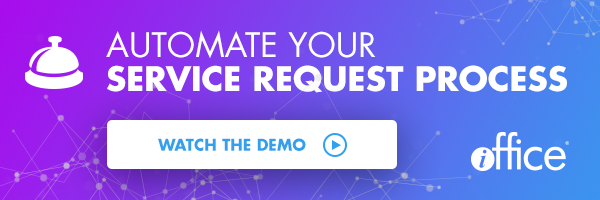Preventive Maintenance Vs. Predictive Maintenance: What’s The Difference?


Preventive maintenance and predictive maintenance are two sides of the same coin— but they’re not exactly the same thing.
Both are effective strategies for asset maintenance, but you need to understand the differences between the two and how they work together. Here’s a closer look at preventive maintenance vs. predictive maintenance and what you need to know.
What Is Preventive Maintenance?
In a preventive maintenance strategy, facilities managers perform systematic inspections of assets and execute routine maintenance to prevent unexpected equipment downtime or failure. Unlike reactive (or corrective) maintenance where service occurs after the asset has malfunctioned, preventive maintenance requires performing maintenance before anything malfunctions.
Different types of preventive maintenance involve the use of different triggers to determine when to service the equipment. Here are a few examples of preventive maintenance:
- Time-based maintenance involves completing routine maintenance at scheduled intervals, such as weekly, monthly or annually
- Condition-based maintenance refers to performing maintenance based on the discovery of physical evidence of potential asset failure
- Usage-based preventive maintenance involves performing maintenance after a certain threshold has passed, such as hours in use or miles driven
Preventive maintenance is appropriate for assets that are mission-critical for day-to-day operations and are more likely to fail as they age. The extent of the maintenance required on any asset depends on utilization and environmental conditions. However, the American National Standards Institute (ANSI) has general recommendations for what types of inspections and maintenance are needed and how often they should be performed.
How Do You Implement Preventive Maintenance?
Preventive maintenance is different from simply keeping an eye on equipment and following the manufacturer’s recommended repair schedule.
To properly implement preventive maintenance, the facilities team must maintain detailed asset profiles that include information such as asset age, dates of inspection, service records and expected lifespan for every piece of equipment in the company. To ensure the accuracy of these asset profiles, facilities professionals need to use asset management software.
Asset management software gives FMs on-demand access to all these important details in one place. They can see this information at a glance and use it along with facility maintenance software to manage service requests. They can even set up workflows to create automatic service requests when an asset reaches a certain age or utilization threshold.
Facility maintenance software enables facility managers to quickly assign a technician to each ticket and track the status of those tickets throughout the lifecycle. Because the solution stores all of the relevant information, including maintenance manuals, technicians know exactly what to do as soon as they are assigned a ticket.
What Is Predictive Maintenance?
While preventive maintenance relies heavily on industry averages and best practices to guide maintenance decisions, predictive maintenance involves using an asset’s actual utilization to decide when to perform maintenance.
With a predictive maintenance strategy, facilities teams use historical and current performance data to determine when a malfunction is likely to occur and then perform maintenance in advance. The other key difference between preventive maintenance and predictive maintenance is technology.
Predictive maintenance requires technology like Internet of Things (IoT) sensors and facility maintenance software to track the true utilization of an asset. IoT sensors should be integrated with facility maintenance software so FMs always have the most up-to-date asset utilization data at their fingertips. They can use this data to inform their maintenance decisions and prevent unexpected asset failures.
How Do You Implement Predictive Maintenance?
Executing a predictive maintenance strategy is slightly more complex than applying preventive maintenance. These three steps can help simplify the process:
- Use IoT sensors to establish baselines for asset performance indicators like temperature, vibration and sound. This information will help you determine the thresholds that indicate an asset could fail soon. You should also take this opportunity to observe how employees interact with these assets to determine if bad habits could be decreasing the lifespan of some equipment.
- Use the dashboards and analytics reports in your facility maintenance software to identify trends and potential problems. For example, if one particular asset consistently malfunctions despite repeated repairs, it could indicate a larger problem. The asset may have been installed correctly or it may not be well-suited for the environmental conditions where it’s located. Once you identify this problem, you can replace the asset instead of wasting money on repeated repairs that don’t last.
- Look for ways to improve your predictive maintenance strategy. As the cost of IoT sensors drops and facilities management technology continues to improve, you’ll have plenty of opportunities to optimize your asset maintenance.
The size of your organization, your available resources and your asset portfolio will help you determine whether to implement preventive or predictive maintenance. No matter which strategy you choose, facility maintenance software is an integral part of streamlining operations and reducing costs.
See how investing in our facility maintenance software can help you implement preventive or predictive maintenance. Request a free demo today.
